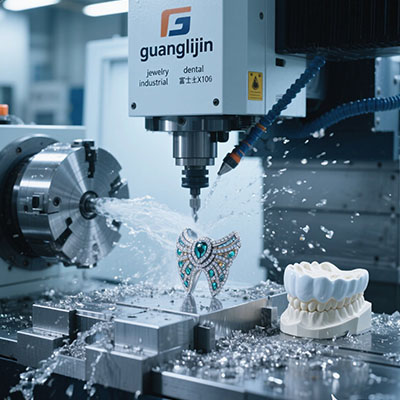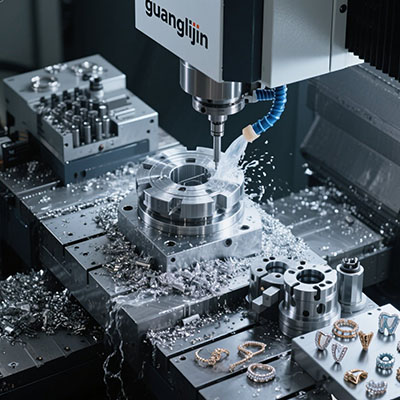Small 5 Axis CNC: Precision Machining for Compact Applications
The Space and Precision Dilemma
Small workshops face big challenges. They need high precision but have limited space. Traditional large 5-axis machines simply won’t fit. This creates a significant barrier to advanced manufacturing capabilities.
Compact parts require sophisticated machining. Think medical implants, drone components, or precision instruments. These demand multi-axis capabilities in a small footprint. The solution? Small 5-axis CNC systems.
Why Compact 5-Axis Machines Make Sense
Small cnc milling 5 axis systems deliver big performance. They offer full 5-axis capabilities in limited spaces. These machines are perfect for prototyping and small batch production.
Interestingly, their smaller size often improves accuracy. Reduced vibration and thermal effects enhance precision. This makes them ideal for high-tolerance work in research and development settings.
Real-World Application: Dental Implant Success
Our team worked with a dental lab in mid-2025. They struggled with complex implant abutments. Their 3-axis machine required multiple setups and manual rotations. This caused consistency issues and high rejection rates.
We installed a compact 5-axis solution with dramatic results. Production time decreased by 70%. Rejection rates dropped from 15% to under 2%. The lab tripled their monthly output without adding floor space.
Space Efficiency
Requires only 10-15 square feet. Fits in small workshops and labs perfectly.
Energy Savings
Uses 40% less power than full-size machines. Reduces operating costs significantly.
Quick Setup
Simplified fixturing and faster programming. Ideal for rapid prototyping work.
Lower Investment
Costs 50-60% less than industrial machines. Accessible to small businesses.
Compact vs Standard 5-Axis Performance Comparison
| Specification | Project A (Compact) | Project B (Standard) |
|---|---|---|
| Floor Space | 12 sq ft | 45 sq ft |
| Power Consumption | 5 kW average | 15 kW average |
| Positioning Accuracy | ±0.008mm | ±0.012mm |
| Typical Work Volume | 8″ x 6″ x 6″ | 24″ x 16″ x 12″ |
Implementing Small 5-Axis: Step-by-Step Guide
Success with compact 5-axis requires careful planning. Follow these practical steps:
Step 1: Space Assessment – Measure available floor space accurately. Consider access for maintenance and material handling.
Step 2: Power Requirements – Verify electrical supply matches machine needs. Include proper grounding and surge protection.
Step 3: Material Planning – Select appropriate workholding for small parts. Consider vacuum chucks or modular fixtures.
Step 4>Software Preparation – Install and configure CAM software. Ensure it supports simultaneous 5-axis toolpaths.
Step 5: Progressive Training – Start with 3+2 axis operations. Gradually advance to full simultaneous machining.
Technical Advantages of Compact Systems
Small 5-axis machines offer unique technical benefits. Their rigid construction minimizes vibration. This improves surface finish quality significantly.
According to Modern Machine Shop data, compact 5-axis systems achieve 25% better surface finishes on small parts compared to larger machines. The reduced mass and vibration pay real dividends.
Another study by Manufacturing Engineering showed that small shops using compact 5-axis technology increased their prototyping capacity by 300%. This demonstrates the transformative impact of accessible multi-axis machining.
Common Misconceptions About Small Machines
Many manufacturers underestimate compact 5-axis capabilities. They assume smaller means less capable. This misconception prevents them from accessing advanced manufacturing.
Counterintuitively, small 5-axis machines often deliver better precision for miniature components. Their scaled-down mechanics provide superior stiffness and thermal stability for small work volumes.
Future Trends in Compact Machining
The market for small 5-axis systems is growing rapidly. Desktop-sized machines are becoming more capable. They’re revolutionizing prototyping and education.
Integration with automation is the next frontier. Small robotic loaders and vision systems will enable lights-out manufacturing. This makes small-batch production more efficient than ever.
Small 5-Axis Implementation Checklist
- ✓ Verify floor space and power requirements
- ✓ Assess material handling for small parts
- ✓ Select appropriate workholding solutions
- ✓ Install and test CAM software capabilities
- ✓ Plan progressive operator training program
- ✓ Establish maintenance and calibration schedule
- ✓ Develop safety protocols for compact workspace
Frequently Asked Questions
What are the best small 5 axis CNC machines for aluminum prototyping?
Compact machines with 15,000+ RPM spindles and rigid construction excel at aluminum prototyping. Look for systems with good chip clearance and cooling.
How much does a desktop 5 axis CNC milling machine cost?
Desktop 5-axis systems range from $25,000 to $80,000. Professional-grade compact machines typically cost $60,000 to $150,000.
Can small 5 axis CNC routers handle titanium medical parts?
Yes, with proper tooling and parameters. Modern compact machines with high-torque spindles can effectively machine titanium for medical applications.
What software is needed for programming compact 5 axis CNC systems?
You need CAM software with full 5-axis capabilities. Fusion 360, SolidCAM, and ESPRIT offer excellent solutions for small 5-axis programming.
Are benchtop 5 axis CNC machines suitable for production work?
Absolutely. Many benchtop systems now offer production-level reliability. They’re ideal for small batch manufacturing and specialized components.







